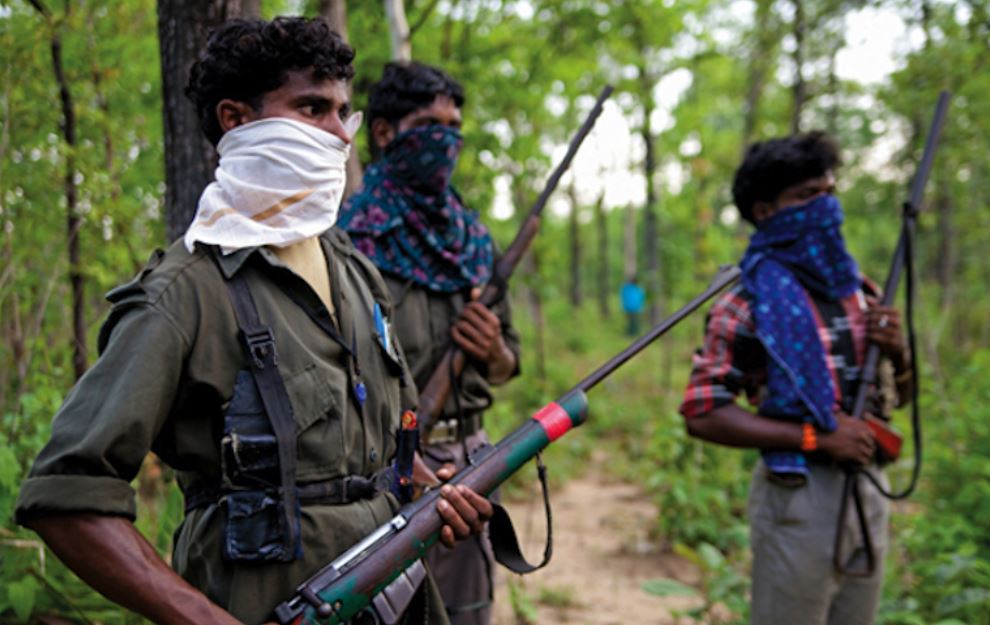Introduction
In a grievous incident that underscores the persistent menace of Naxalite violence in central India, two Special Task Force (STF) personnel were killed, and four others were injured after Naxalites detonated an improvised explosive device (IED) in Chhattisgarh’s Bijapur district. The deadly attack, which occurred on the night of July 17, 2024, highlights the perilous conditions faced by security forces in their ongoing battle against insurgency.
The Ambush in Tarrem
The harrowing incident unfolded in the dense forests of the Tarrem area, located at the tri-junction of Bijapur, Sukma, and Dantewada districts. The STF, along with personnel from the District Reserve Guard (DRG), Central Reserve Police Force (CRPF), and its elite CoBRA unit, had been conducting an anti-Naxalite operation based on intelligence reports about the presence of Naxal operatives from the Darbha and West Bastar divisions.
As the joint team was returning from their mission, Naxalites ambushed them by detonating an IED, resulting in the tragic deaths of STF constables Bharat Sahu and Satyer Singh Kange. The explosion also inflicted injuries on four other security personnel, necessitating urgent medical evacuation.
The Aftermath and Response
The immediate response to the attack saw reinforcements being dispatched to the area. The injured personnel were swiftly evacuated by helicopter to receive medical treatment, underscoring the gravity of the situation and the need for rapid medical intervention in such hostile environments. The use of helicopters for evacuation highlights the logistical challenges and the critical nature of providing timely medical aid in remote areas plagued by insurgency.
Operation Details and Security Measures
The joint operation, launched on Tuesday, July 16, 2024, was a strategic initiative aimed at dismantling Naxalite strongholds and neutralizing their militant capabilities. The operation involved meticulous planning and coordination among various security units, reflecting the ongoing efforts to combat the insurgency that has plagued the region for decades.
Despite the comprehensive nature of the operation, the ambush underscores the Naxalites’ capability to strike back with lethal precision. The attack serves as a grim reminder of the insurgents’ resilience and the continuous threat they pose to peace and security in the region.
The Human Toll and Security Challenges
The deaths of constables Bharat Sahu and Satyer Singh Kange are a poignant reminder of the human cost borne by security personnel in their relentless fight against insurgency. Both hailed from different parts of Chhattisgarh, with Sahu being a resident of Raipur and Kange from Narayanpur district. Their sacrifice highlights the risks and dangers faced by those on the front lines of this protracted conflict.
The injuries sustained by the four other personnel further illustrate the perilous conditions under which these operations are conducted. The immediate medical evacuation and treatment of the injured underscore the critical importance of emergency response capabilities in conflict zones.
Broader Implications and Strategic Considerations
The attack in Bijapur is not an isolated incident but part of a broader pattern of violence that continues to afflict the region. The Naxalite insurgency, rooted in socio-economic grievances and regional disparities, has been a persistent challenge for successive governments. Despite numerous operations and initiatives aimed at curbing their influence, the insurgents have demonstrated a capacity to adapt and retaliate.
Government and Public Response
In the wake of the attack, there has been an outpouring of condolences and expressions of solidarity with the bereaved families. The government has reiterated its commitment to eradicating Naxalite violence and ensuring the safety of its citizens. Security forces have been urged to remain vigilant and proactive in their efforts to dismantle Naxalite networks and prevent future attacks.
Conclusion
The tragic Naxal attack in Chhattisgarh’s Bijapur district, resulting in the loss of two brave STF personnel and injuries to four others, is a stark reminder of the ongoing battle against insurgency in the region. It underscores the immense challenges faced by security forces and the need for continued vigilance, strategic planning, and robust response mechanisms to counter the persistent threat posed by Naxalite militants.
Summary
The devastating Naxal attack in Bijapur, Chhattisgarh, highlights the ongoing threat of insurgency in the region. The incident resulted in the deaths of two STF personnel and injuries to four others, underscoring the perilous conditions faced by security forces. The attack emphasizes the need for continued vigilance and strategic measures to combat Naxalite violence and ensure the safety of those on the front lines.
Key Learning Points
| Point | Details |
|---|---|
| Focus Keyword | Naxal attack in Chhattisgarh |
| Incident Overview | IED explosion in Bijapur resulting in deaths and injuries |
| Operation Details | Anti-Naxalite operation involving STF, DRG, CRPF, and CoBRA |
| Immediate Response | Rapid medical evacuation of injured personnel |
| Human Toll | Deaths of STF constables Bharat Sahu and Satyer Singh Kange |
| Strategic Implications | Ongoing threat of Naxalite insurgency and need for vigilance |
| Government Response | Commitment to eradicating Naxalite violence and ensuring safety |
Soumya Smruti Sahoo is a seasoned journalist with extensive experience in both international and Indian news writing. With a sharp analytical mind and a dedication to uncovering the truth, Soumya has built a reputation for delivering in-depth, well-researched articles that provide readers with a clear understanding of complex global and domestic issues. Her work reflects a deep commitment to journalistic integrity, making her a trusted source for accurate and insightful news coverage.



